Table of Contents
- Clearing the Air: The Role of Vacuums in a Healthier Home Environment
- What is a Vacuum Cleaner?
- Benefits of a Vacuum Cleaner
- Types of Vacuum Cleaners
- Choosing the Right Vacuum for Specific Needs: A Comprehensive Guide for Consumers
- DIY Repairs and Troubleshooting: A Handy Guide to Addressing Common Vacuum Cleaner Issues
- Allergies and Vacuum Cleaners: Breathing Easier with the Right Features
- Frequently Asked Questions (FAQ) about Vacuum Cleaners
Clearing the Air: The Role of Vacuums in a Healthier Home Environment
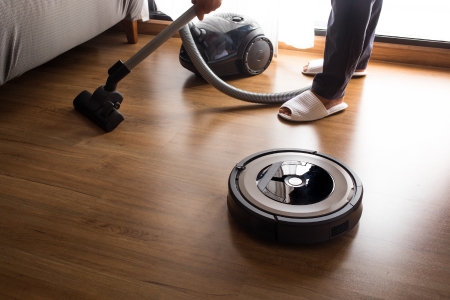
In today’s modern age, it’s crucial to have tools at home that help us streamline our chores.
One indispensable item that finds its way onto the list of many Filipinos is the vacuum cleaner.
But do you know its significance and how it aids us daily? Let’s uncover the details!
What is a Vacuum Cleaner?
Simply put, a vacuum cleaner uses electronic power to suck up dust and various impurities from floors and other surfaces.
But behind its straightforward mechanism lie diverse features and variations that we can choose from.
Benefits of a Vacuum Cleaner
Vacuum cleaners have revolutionized the way we clean our living spaces.
They not only provide cleaning convenience but also offer several other benefits that might not be immediately obvious.
Let’s delve deeper into the multifaceted advantages of using vacuum cleaners:
Deep Cleaning Capabilities
- Modern vacuum cleaners, with their powerful motors and specialized brushes, can extract dirt, dust, and allergens trapped deep within carpets and rugs. This level of cleaning is challenging to achieve with manual methods.
Health and Hygiene
- Allergen Reduction: Vacuum cleaners, especially those equipped with HEPA filters, can capture and retain tiny particles like pollen, pet dander, and dust mites that might trigger allergies.
- Improved Air Quality: By removing airborne contaminants and preventing them from recirculating, vacuums can enhance indoor air quality.
Efficiency and Time-saving
- Covering large areas, especially in settings like offices or halls, becomes significantly quicker with vacuum cleaners compared to traditional brooms or mops.
Economical in the Long Run
- Despite the initial investment, a good vacuum cleaner can last for years with proper maintenance. Moreover, by preserving carpets, rugs, and upholstery from embedded dirt and dust, it can prolong their lifespan and appearance, saving money in replacement costs.
Versatility
- Many modern vacuum cleaners come with multiple attachments and settings, allowing users to tackle a variety of surfaces and cleaning challenges, from hardwood floors and delicate curtains to car interiors and even ceilings.
Space-saving
- Advancements in design have made many vacuum cleaners, particularly stick or handheld models, compact and easy to store, saving space in storage closets.
Ergonomic Benefits
- Certain designs, like backpack or canister vacuums, distribute weight evenly, reducing strain on the back and arms. The extended handles also mean less bending and stooping, which is beneficial for those with back problems.
Eco-friendly Options
- Designers have created some vacuum cleaners to be energy efficient, so they consume less power without sacrificing performance. Moreover, bagless models reduce the need for disposable bags, cutting down on waste.
Safety
- Wet and dry vacuum cleaners can safely clean up liquid spills, preventing slip hazards. Furthermore, the act of vacuuming reduces the amount of dust and particulates that can make floors slippery.
Enhanced Aesthetics
- Regular vacuuming keeps carpets, rugs, and floors looking their best by removing dirt and preventing the embedding of stains. A clean floor can greatly enhance the overall ambiance of a room.
Noise Reduction
- Traditionally, vacuums were noisy, but engineers have designed many modern models to operate much more quietly, providing a more peaceful cleaning experience.
Smart Features
- Robotic vacuums, in particular, come equipped with features like scheduling, self-charging, and even smart home integration, providing a hands-free and customized cleaning experience.
The benefits of vacuum cleaners extend beyond mere cleaning.
They play an integral role in maintaining a healthy living environment, saving time, and providing a level of convenience that traditional cleaning methods can’t match.
Continuous technological advancements will only increase these benefits, making vacuum cleaners an indispensable tool for modern homes and offices.
Types of Vacuum Cleaners
Vacuum Cleaners for Home Use
Upright Vacuum Cleaners
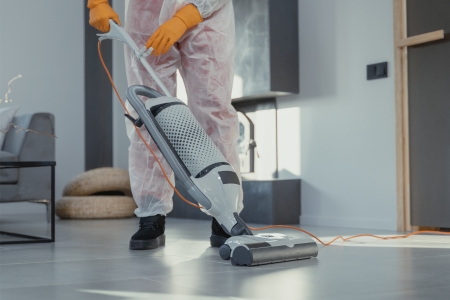
- Description: These are the most traditional type of vacuum and are suitable for homes with a lot of carpeting. They stand upright and usually come with a variety of attachments.
- Best for: Deep-cleaning carpets, homes with large floor areas.
Canister Vacuum Cleaners
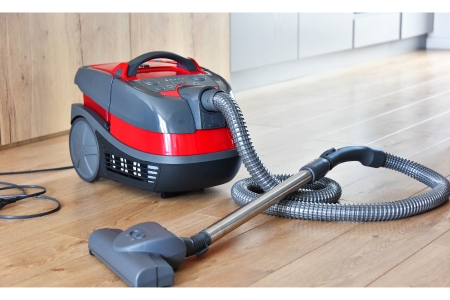
- Description: They have a separate canister attached to the wand of the vacuum. More versatile than uprights, they’re great for multi-surface cleaning.
- Best for: Homes with mixed flooring, above-floor cleaning like drapes and upholstery.
Stick or Broom Vacuum Cleaners
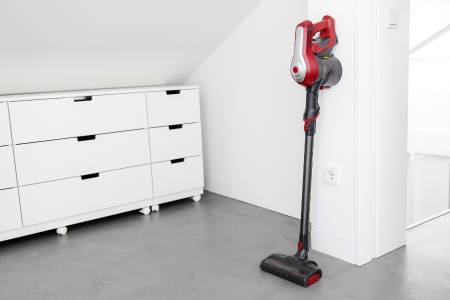
- Description: Slimmer versions of uprights and often battery-powered. They’re lightweight and often used for quick clean-ups.
- Best for: Light cleaning tasks, quick touch-ups, smaller homes or apartments.
Handheld Vacuum Cleaners
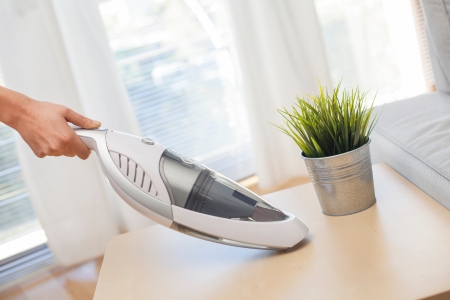
- Description: Designers made these small and portable for spot cleaning. They can come with or without cords.
- Best for: Cleaning vehicle interiors, furniture surfaces, and small messes.
Robotic Vacuum Cleaners
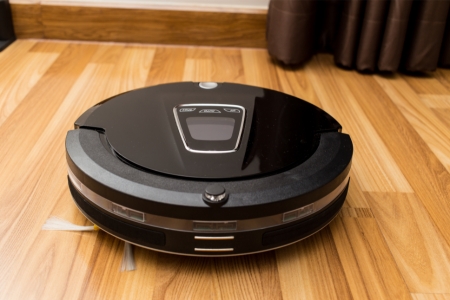
- Description: You can program these automated cleaning machines to clean floors on their own or without human intervension.
- Best for: Daily maintenance cleaning, homes with open floor spaces.
Central Vacuum Systems
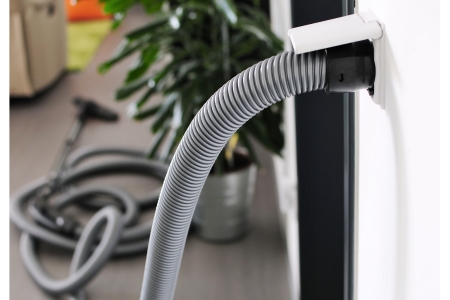
- Description: Installed into a building’s structure, they have a central power unit connected via inlets in walls. A long hose is plugged into the inlets when cleaning is needed.
- Best for: Homes that want to avoid lugging around a vacuum, allergy sufferers (as dust is expelled outside the home).
Vacuum Cleaners for Commercial Use
Upright Commercial Vacuum Cleaners
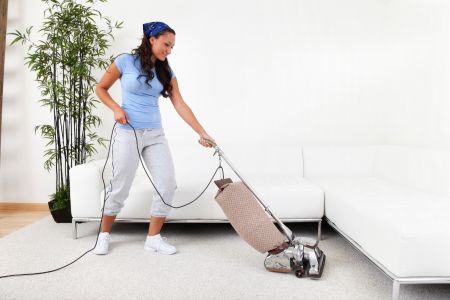
- Description: More robust versions of residential uprights designed for longer usage cycles and more extensive cleaning areas.
- Best for: Large carpeted areas in offices, conference rooms.
Backpack Vacuum Cleaners
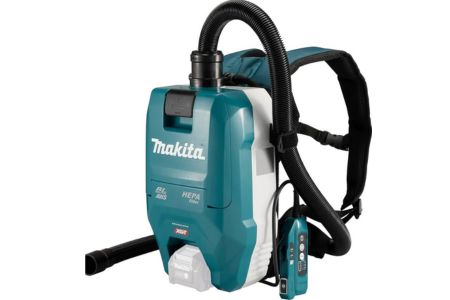
- Description: Designed to be worn on the back, offering increased mobility in congested areas.
- Best for: Cleaning theaters, aisles, crowded spaces.
Canister Vacuum Cleaners for Commercial Use
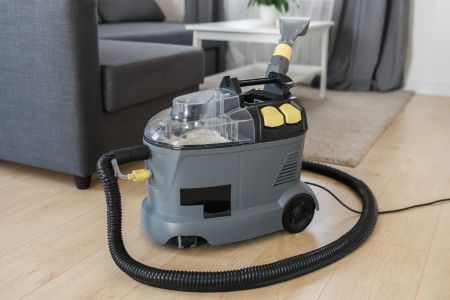
- Description: Similar to their residential counterparts but built more ruggedly for commercial tasks.
- Best for: Spaces with mixed flooring, such as retail stores or dining areas.
Wet/Dry Vacuum Cleaners
- Description: Capable of cleaning up both liquid spills and dry dirt without changing machines.
- Best for: Restaurants, industrial settings, areas prone to spills.
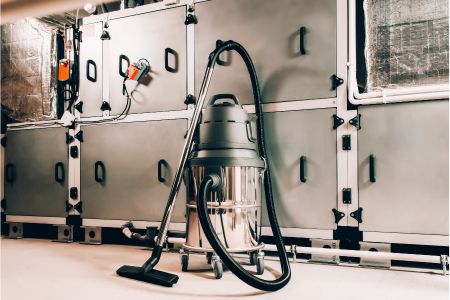
Wide Area Vacuum Cleaners
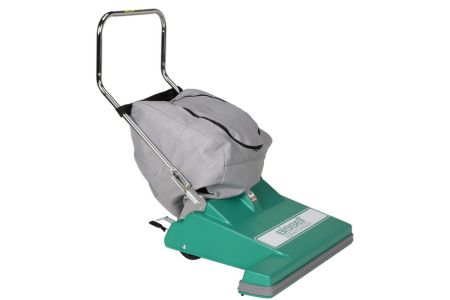
- Description: These have a much broader cleaning path than traditional vacuums, allowing them to cover vast areas in less time.
- Best for: Ballrooms, conference halls, large lobbies.
Pile Lifters
- Description: Not only vacuum but also brush and lift carpet fibers, helping restore the carpet’s appearance.
- Best for: Hotels, venues with plush carpets that need rejuvenating.
Both residential and commercial vacuum cleaners serve the primary purpose of cleaning, but their design and features are tailored to cater to the unique demands of their respective environments.
Choosing the Right Vacuum for Specific Needs: A Comprehensive Guide for Consumers
The plethora of vacuum cleaner options available in today’s market can make choosing the right one a daunting task.
However, by assessing specific needs and understanding the strengths of each vacuum type, consumers can make an informed decision.
Here’s a detailed guide to help you select the perfect vacuum for your unique requirements:
Home Size
- Small Apartments or Studios: Lightweight, compact models like stick or handheld vacuums are ideal due to limited storage space.
- Large Homes: Upright or canister vacuums with a broader cleaning path and larger dust capacity can cover vast areas efficiently.
Flooring Type
- Carpets and Rugs: Upright vacuums, especially those with adjustable brush rolls, excel at deep-cleaning carpets.
- Hardwood or Tile: Canister vacuums with soft-bristle attachments or specific hard-floor settings are preferable to prevent scratches.
- Mixed Flooring: Go for vacuums with adjustable settings or height adjustments to seamlessly transition between different floor types.
Pets
- If you have pets, consider vacuums with specialized pet hair attachments or models known for efficient pet hair removal.
- Filters are essential: HEPA filters can effectively capture pet dander, a common allergen.
Allergies
- For households with allergy sufferers, vacuum cleaners equipped with HEPA or other advanced filtration systems are crucial. They capture fine particles like pollen, dust mites, and other allergens.
- Bagged vacuums can be more hygienic, as they seal in the dust and debris, preventing it from escaping into the air during disposal.
Versatility and Attachments
- If you need to clean multiple surfaces like curtains, upholstery, or crevices, ensure the vacuum comes with a variety of attachments.
- A model with a detachable handheld unit can be beneficial for above-floor cleaning.
Weight and Mobility
- For multi-story homes, or if you’ll be transporting the vacuum frequently, consider a lightweight model or one with easy maneuverability features.
- Robotic vacuums can be an excellent choice for those who prefer hands-free cleaning.
Noise Level
- If noise is a concern, research the decibel level of the vacuum model. Some vacuums are specifically designed to operate quietly, suitable for households with babies or noise-sensitive individuals.
Budget and Brand Preference
- Vacuum cleaners come in various price ranges. Determine a budget and compare features within that range.
- While brand isn’t everything, reputable brands often offer reliable warranties and customer support.
Maintenance and Replacement Parts
- Consider how frequently filters or bags need to be replaced and the availability and cost of these parts.
- Bagless models, although they can save on the recurring cost of bags, might need more frequent filter replacements.
Smart Features and Automation
- Modern robotic vacuums offer features like scheduling, mapping, and integration with smart home systems. If automation is your priority, delve into these options.
Eco-friendliness
- If environmental concerns are paramount, look for models that boast energy efficiency or sustainable manufacturing processes.
Selecting the right vacuum cleaner requires a balance between your specific needs and the features that a model offers.
By understanding and prioritizing your requirements, you can find a vacuum that makes cleaning not just effective, but also enjoyable.
DIY Repairs and Troubleshooting: A Handy Guide to Addressing Common Vacuum Cleaner Issues
Vacuum cleaners, like any household appliance, can sometimes face hiccups in their operation.
While major repairs might require professional intervention, many common issues can be diagnosed and fixed by homeowners themselves.
Let’s walk through some frequent vacuum cleaner problems and how to tackle them without ringing up the repair shop.
Loss of Suction
- Potential Causes:
- Clogged filters.
- Full or improperly placed dust bags/bins.
- Blocked hoses or nozzles.
- DIY Solutions:
- Clean or replace the filters regularly.
- Empty the dust bag or bin, and ensure it’s securely fitted.
- Check for obstructions in the hoses and nozzles and clear them.
Strange Noises or Vibrations
- Potential Causes:
- Blockages in the vacuum.
- Broken or worn-out belts.
- Malfunctioning motor.
- DIY Solutions:
- Clear out any obstructions in the hoses, nozzles, or brushes.
- Check the belt for wear and replace it if necessary (refer to the user manual for guidance).
- If it’s a motor issue, it might need professional attention.
Vacuum Doesn’t Turn On
- Potential Causes:
- Faulty power cord or plug.
- Overheated motor due to prolonged use.
- Faulty switch.
- DIY Solutions:
- Check the plug and cord for any visible damage. If damaged, they’ll need replacing (with caution).
- Let the vacuum cool down for a while, then try turning it on again.
- If the switch appears damaged or loose, consider replacing it (refer to the user manual).
Brush Roll Isn’t Spinning
- Potential Causes:
- Debris or hair wrapped around the brush.
- Worn-out or broken belt.
- DIY Solutions:
- Clean out hair, threads, and other debris from the brush roll.
- Examine the belt and replace if it appears stretched, worn, or broken.
Bad Odor When Operating
- Potential Causes:
- Dirty or old filters.
- Mold or bacteria buildup due to wet debris.
- DIY Solutions:
- Clean or replace filters regularly.
- Ensure the dustbin or bag is dry before reassembling. If using a wet/dry vacuum, make sure it’s dried out thoroughly after wet use.
Reduced Movement or Maneuverability
- Potential Causes:
- Wheels clogged with dirt or hair.
- Broken or damaged wheels.
- DIY Solutions:
- Clean the wheels and the area around them.
- If a wheel is damaged, refer to the user manual on how to replace it.
Dust Escaping from the Vacuum
- Potential Causes:
- Full or improperly sealed dust bag/bin.
- Damaged or ill-fitted filters.
- DIY Solutions:
- Empty and correctly reattach the dust bag or bin.
- Replace or refit any damaged or loose filters.
For any DIY repairs, always ensure that the vacuum cleaner is unplugged from the power source.
While these solutions cater to common problems, remember that regular maintenance, such as cleaning filters and emptying the dust compartment, can preempt many issues.
However, if the problem persists or seems complex, it’s always a good idea to consult with a professional to avoid further damage.
Allergies and Vacuum Cleaners: Breathing Easier with the Right Features
Allergies can make life quite uncomfortable, with sneezing, itching, and watery eyes becoming all too common.
While there are numerous triggers for these allergic reactions, many of them, like dust mites, pollen, and pet dander, reside in our homes.
Fortunately, vacuum cleaners can be our frontline defense against these allergens, provided we choose the right models with specific features designed to combat them.
Let’s delve into how certain vacuum models and their attributes can significantly reduce allergens and elevate the indoor air quality of your home.
High-Efficiency Particulate Air (HEPA) Filters
- What are they? HEPA filters can trap at least 99.97% of particles 0.3 microns in diameter (like pollen and dust mites).
- Benefits: By capturing such a high percentage of small particles, HEPA filters ensure that the air expelled from the vacuum is much cleaner than what was sucked in, making them indispensable for allergy sufferers.
Sealed System Vacuum Cleaners
- What are they? These vacuums are designed to prevent any air (and therefore, allergens) from escaping the machine except through the filter.
- Benefits: Ensures that all air passes through the filter, maximizing the capture of allergens and improving indoor air quality.
Bagged Vacuums
- What are they? Vacuums that store dirt and debris in replaceable bags.
- Benefits: Bagged systems often contain allergens better than bagless ones. Removing and disposing of the bag minimizes direct contact with allergens.
Anti-Allergen Vacuum Bags
- What are they? Specially designed bags that capture and retain more allergens than standard bags.
- Benefits: These bags further reduce the release of particles back into the air when vacuuming or changing the bag.
UV Light
- What is it? Some vacuums come equipped with ultraviolet (UV) lights designed to kill microorganisms like dust mites and bacteria.
- Benefits: UV lights can neutralize allergens directly at the source, providing an added layer of protection against allergy triggers.
Washable Filters
- What are they? Filters that can be removed, cleaned, and reused.
- Benefits: Regular cleaning ensures that the filter operates at peak efficiency and doesn’t become a source of allergens itself.
Pet-specific Vacuums
- What are they? Vacuums designed explicitly for homes with pets, often featuring stronger suction and brushes that pick up pet hair without tangling.
- Benefits: Effective removal of pet dander, a common allergen, from carpets and upholstery.
Activated Charcoal Filters
- What are they? These filters use activated charcoal to neutralize odors.
- Benefits: While primarily targeting smells, these filters can also absorb some gaseous pollutants that might trigger allergies.
For those grappling with allergies, the right vacuum cleaner isn’t just a cleaning tool; it’s a vital instrument in maintaining health and comfort.
By understanding and investing in vacuums with these specific features, homeowners can ensure a significant reduction in household allergens, contributing to a fresher, cleaner, and healthier living environment.
Think of vacuum cleaners as more than just dirt-busters. They’re our silent health guardians, too!
From catching sneaky allergens with their fancy filters to taking on pet hair with special tools, these machines do more than just tidy up our homes.
In the grand tapestry of home care, vacuums play a starring role, ensuring not just clean floors but also cleaner air to breathe.
It’s a blend of science and magic, making our homes truly feel like our safe havens. So, the next time you’re vacuuming, remember: it’s not just about cleanliness—it’s about healthiness, too!
Frequently Asked Questions (FAQ) about Vacuum Cleaners
Remember, while this FAQ covers common queries, always consult your vacuum cleaner’s user manual or manufacturer’s website for model-specific questions and guidance.